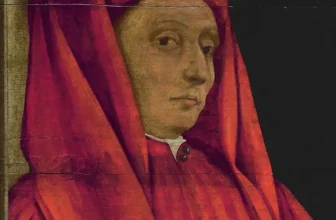Lucas Cranach the Elder: The Golden Age of German Renaissance Art
| Invest in Hidden Masterpiece: Rare Antique Oil Paintings For Sale. Limited Originals Available 💰😊 Are you looking for authentic hidden masterpiece? Explore old master antique oil paintings from the Renaissance and Baroque eras. From 16th-century portraits to 18th-century landscapes. Authenticity guaranteed, Old Master antique oil paintings for sale. Shop Now! 🎨 Renaissance And Baroque Art Landscape Antique Paintings Old Master Portrait Paintings |
There are artists whose names echo through the corridors of art history, not because they sought fame, but because their brushstrokes captured the pulse of an age. Lucas Cranach the Elder is one of those rare masters, an artist who painted princes, shaped the visual identity of the Protestant Reformation, and left behind one of the most extensive oeuvres of the entire Renaissance.
For art collectors and antique painting lovers, the world of Cranach is a treasure trove: rich symbolism, elegant figures, and a distinctive style that is instantly recognizable. This is a story not only of art, but of power, politics, religion, and legacy.
Let us step into that world.
A Renaissance Story Begins: Who Was Lucas Cranach the Elder?
Lucas Cranach the Elder was born around 1472 in Kronach, Germany, in a world just beginning to feel the intellectual tremors of the Renaissance. Unlike Italian contemporaries like Leonardo da Vinci or Michelangelo, who came from towering centers of artistic innovation, Cranach began his life far from Europe’s major courts.
Yet he would rise to become:
Court Painter to the Electors of Saxony
Close friend and visual propagandist of Martin Luther
A master painter, printmaker, publisher, and entrepreneur
Founder of a prolific art workshop that lasted generations
His life story intertwines with major historical events, political power struggles, religious revolution, and the birth of modern identity.
The Rise of a Court Painter
In 1505, Cranach’s life changed forever. He was invited to Wittenberg to become the court painter to Frederick the Wise, one of the most powerful German rulers of the time. This position placed Cranach at the heart of German politics, culture, and religious transformation.
As court painter, he created:
portraits of princes and diplomats
altarpieces and religious scenes
mythological works for aristocratic patrons
designs for medals, coats of arms, and even decorations for festivals
Cranach became the visual architect of Saxon power.
But fate had more in store.
The Reformation’s Visual Voice
When Martin Luther ignited the Protestant Reformation in 1517, Wittenberg became the center of a movement that would forever reshape Europe. Cranach and Luther became lifelong friends, and Cranach’s workshop produced:
the first official portraits of Martin Luther
woodcut illustrations for Luther’s translated Bible
anti-papal prints
imagery promoting Protestant theology
While Luther crafted the words that challenged a religious empire, Cranach crafted the images that carried those ideas across Germany and beyond.
For collectors today, Cranach’s Reformation-related works represent some of his most historically significant and culturally impactful creations.
What Was Lucas Cranach the Elder Known For?
Cranach is known for several defining characteristics that collectors and art historians prize:
1. Graceful, elongated figures
His figures, especially female nudes, are slender, refined, and elegant, often with a distinct S-curve posture.
2. Deep symbolism
His artworks are filled with allegorical meanings, religious messages, and moral narratives.
3. Masterful portraits
Cranach painted kings, queens, electors, and reformers with striking detail and psychological presence.
4. A prolific workshop
His studio functioned almost like a modern brand, producing hundreds of works in his unmistakable style.
5. Reformation imagery
He served as the chief illustrator of the Protestant Reformation.
6. Mythology and sensuality
Cranach is famous for mythological scenes that blend eroticism with moral lessons, a popular theme among European aristocrats.
Cranach’s style is so recognizable that many collectors say they can identify his works “from across the room.”
What Are Lucas Cranach the Elder’s Most Famous Paintings?
Cranach’s oeuvre is vast, but several masterpieces stand out as iconic to art historians and collectors:
1. “Judith with the Head of Holofernes” (c. 1530)
One of Cranach’s most famous female portraits, embodying beauty, danger, and biblical drama.
2. “Adam and Eve” (1526–1538)
A series of versions depicting the first humans with Cranach’s signature elongated forms.
3. “Venus and Cupid” (various years)
Cranach painted many variations of Venus, refined, sensual, and symbolic.
4. “The Nymph of the Spring” (c. 1530)
A peaceful, enchanting depiction of a reclining nymph, deeply beloved by collectors.
5. “Martin Luther” portraits
Cranach’s portraits of Luther helped cement the reformer’s public image.
6. “The Fountain of Youth” (1546)
A large and complex allegorical painting that remains one of Cranach’s most intriguing works.
7. “The Three Graces” (1530s)
A sensual yet moralistic depiction, typical of Cranach’s courtly mythological style.
8. “Christ and the Adulteress” (1532)
A powerful biblical scene exploring forgiveness and judgment.
These works appear across museums in Europe and the United States and are frequently referenced by collectors searching for iconic Cranach pieces.
How Many Paintings Did Lucas Cranach the Elder Create?
Estimating Cranach’s total output is challenging because his workshop was one of the most productive in Europe. Scholars believe:
Cranach created or supervised over 1,000 paintings,
of which about 600–700 survive today.
This extraordinary volume is part of what makes Cranach so fascinating to collectors, his legacy is vast, diverse, and still occasionally yields new discoveries.
The Most Expensive Lucas Cranach the Elder Painting Ever Sold
Cranach’s market has grown dramatically in the last 20 years. His works are sought after by museums, private collectors, and investors.
Record Sale: “The Mocking of Christ” , approx. $7.7 million
Sold at Sotheby’s in 2016.
Other high-value sales include:
“Lucretia” (various versions) , several sold for $4–6 million
“Adam and Eve” , versions sold between $3–5 million
“Venus and Cupid” , consistently fetches $2–5 million
His market remains stable and strong due to:
high demand
historical importance
visually distinctive style
rarity of museum-quality works entering private hands
For collectors, a Cranach is not only an artwork, it is a piece of Western history.
Where to See Lucas Cranach the Elder’s Paintings Today
Cranach’s works are displayed across the world’s most prestigious museums. Key locations include:
Germany
Gemäldegalerie, Berlin
Alte Pinakothek, Munich
Wartburg Castle, Eisenach
Dresden State Art Collections
United States
The Metropolitan Museum of Art, New York
National Gallery of Art, Washington, D.C.
J. Paul Getty Museum, Los Angeles
United Kingdom
The National Gallery, London
Royal Collection, Windsor
Other notable collections
The Louvre, Paris
Kunsthistorisches Museum, Vienna
Museo Thyssen-Bornemisza, Madrid
Hermitage Museum, St. Petersburg
For art pilgrims and antique painting lovers, visiting these museums offers a glimpse into the world Cranach helped shape.
Cranach’s Legacy: Why His Art Still Matters
Lucas Cranach the Elder’s influence extends far beyond his lifetime.
1. He shaped the visual identity of the Reformation
Without Cranach, Luther might never have become the face of a global movement.
2. His workshop created one of Europe’s first art “brands”
His son, Lucas Cranach the Younger, continued the tradition, ensuring that the Cranach style lived on for decades after the elder’s death.
3. He pioneered a uniquely German Renaissance aesthetic
While Italian Renaissance artists captivated southern Europe, Cranach became the northern counterpart, expressive, symbolic, spiritual, and sharply detailed.
4. He influenced later artists
His work inspired painters such as Albrecht Dürer, Hans Holbein, and even many of the Pre-Raphaelites centuries later.
5. His compositions became timeless icons
The slim, graceful figures, the delicate faces, the rich symbolism, all remain unmistakably Cranach.
6. Art collectors view him as a cornerstone of European collecting
Owning a Cranach is often seen as owning a piece of the Reformation and Renaissance themselves.
Controversies Surrounding Lucas Cranach the Elder
Like many historical figures, Cranach’s legacy is not without debate.
1. Attribution Challenges
Because his workshop produced enormous amounts of work, it can be difficult to determine:
what Cranach painted himself
what was painted by apprentices
what was painted by his son
This sometimes leads to disputes in the art market.
2. Nazi-Looted Art Cases
Several Cranach paintings have appeared in restitution cases involving art looted by the Nazis during WWII. For example, debates around titles like “Adam and Eve” or “The Hunt” have raised ethical and legal questions.
3. Political Propaganda
As Luther’s ally, Cranach produced anti-Catholic propaganda images that modern audiences may view as provocative or inflammatory.
4. Sensuality vs. Morality
His mythological nudes, strikingly erotic for the time, have sparked long-standing debates about intent, morality, and symbolism.
These controversies do not diminish Cranach’s importance but rather highlight the complexity of his world and his central role within it.
What Do People Today Think of Lucas Cranach the Elder?
Cranach occupies a unique place in art history, and public perception reveals a remarkable balance:
Art collectors admire:
his refined style
the strength of his market
his direct connection to European royalty and religious history
the rarity of acquiring an authenticated Cranach
Historians value:
his role in the Protestant Reformation
his incredibly documented life
his political and cultural influence
Museum visitors love:
the elegance of his figures
the visually striking, instantly recognizable Cranach “look”
the romantic allure of Renaissance courts
Scholars debate:
workshop authenticity
evolving attribution methods
his morality-infused mythological style
But universally, Cranach is respected as:
one of the most important German artists of all time
and
a visionary who bridged faith, politics, and art.
Why Cranach Still Captivates Antique Painting Lovers
Let us imagine a moment in time.
You enter the cool, hushed rooms of a museum. On the wall hangs a portrait: a woman with pale skin, a delicate face, and a faintly knowing smile. She wears rich red garments, jewels glinting softly. The background is dark, the lighting subtle, everything crafted to pull your eyes toward her.
This is Cranach at his best.
Elegant. Mysterious. Unmistakable.
For collectors, Cranach represents:
history in its purest form
beauty that transcends time
a direct link to the courts of European princes
a visual narrative of the Reformation
an investment that carries cultural weight
Owning a Cranach is like owning a piece of the Renaissance itself.
A Timeless Master for Art Collectors and History Lovers
Lucas Cranach the Elder was more than a painter. He was:
a chronicler of faith
a confidant of princes
an early entrepreneur
a master craftsman
a visionary of the German Renaissance
His workshop produced one of the most extensive bodies of work in European history. His images shaped political movements, defined religious identities, and continue to captivate art collectors worldwide.
Whether you admire his elegant portraits, his powerful Reformation imagery, Cranach offers a journey into a world where faith, power, politics, and beauty collided, and where art became the voice of a revolution.





